‘Knowledge Mapping Pigmentation’ project, funded by the Norwegian Seafood Research Fund, will run until 2024 and aims to address the lack of documentation
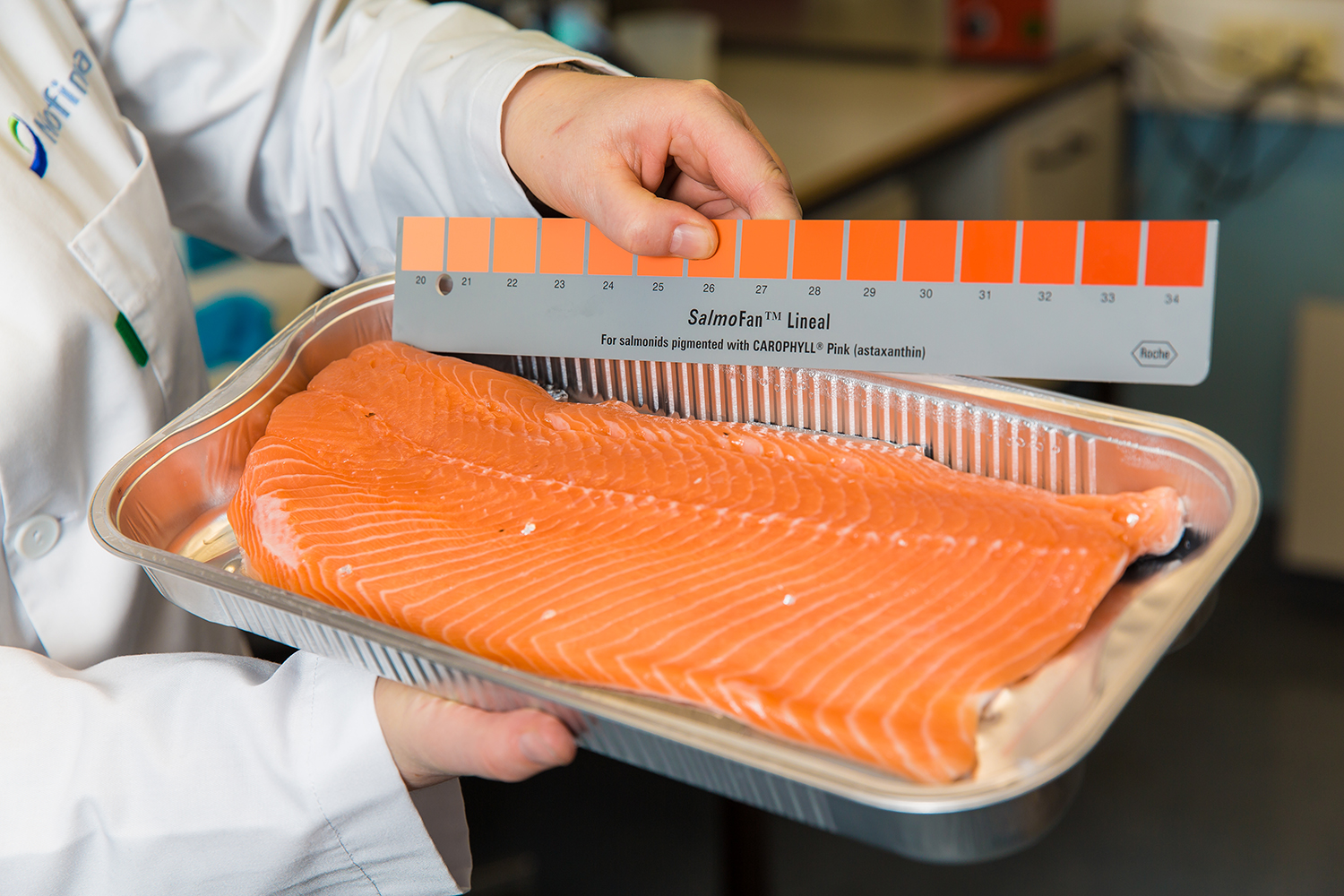
In aquaculture, the color of a farmed fish’s flesh, or its pigmentation, is one of the most important product attributes. The vibrancy of the red-orange color of salmon fillets, for instance, can dictate market value – consumers often associate the degree of color with product quality – and also be a key indicator of health and welfare.
Researchers at food research institute Nofima in Norway believe that farmed salmon fillets have become paler over the past 10 years. By studying the extent of this trend and its possible causes, they hope to help salmon farms improve production in a more targeted manner.
“Over the last five or six years, there has been a lot of focus on pigmentation in the salmon industry and how the fish may be getting paler,” Trine Ytrestøyl, senior scientist at Nofima, told The Advocate. “Feed composition has changed, there is more handling as a result of problems such as sea lice, and more juvenile fish are being produced on land. All these can impact pigmentation.”
Ytrestøyl and her colleagues are part of a new research project called “Knowledge Mapping Pigmentation.” Funded by the Norwegian Seafood Research Fund (FHF), the project will run until 2024 and aims to address the lack of documentation on the extent and prevalence of poor pigmentation in salmon. Data will be gathered through questionnaires, interviews and seminars with salmon farmers and feed producers, Ytrestøyl said, with a focus on disease, where and how salmon are produced, changes in production methods and feed composition, and the size of the fish at slaughter. Along with Norway, other salmon-producing countries such as Canada, Chile and Scotland will also take part.
“Trials have shown that stress and handling can negatively impact the level of astaxanthin, a carotenoid pigment that is responsible for pigmentation in salmon,” said Ytrestøyl. “EPA and DHA levels in feed also have an effect, but we don’t yet know the mechanism behind this. We need to conduct more research into an optimal diet that produces sufficient color in salmon that are reared in challenging conditions. We have also been looking into land-based production, how this impacts pigmentation and the metabolism of astaxanthin, as well as nutritional needs in different production systems.”
Green-lighting growth: Green LED light shows promise in flounder farming
Skin pigmentation has also been the focus of research over the years. It’s species-specific and given by the number and spatial combination of several different cells that contain chromatophores. These are classified into light-absorbing and light-reflecting. Skin pigmentation changes throughout a fish’s life, for example during the reproductive cycle or in response to biotic and abiotic environmental cues. It is regulated by the neuroendocrine system.
Dr. Maria Darias of the French National Research Institute for Sustainable Development (IRD) in Montpellier, France, says that skin color regulation has been shown to be more complex, with other regulatory factors such as cortisol, prolactin, somatolactin, agouti signaling protein, melatonin and thyroid hormones also playing a role.
The Knowledge Mapping Pigmentation project aims to help aquaculture better understand its impact on biological processes and pinpoint production-related effects on pigmentation
Darias agrees with Ytrestøyl that rearing conditions, including nutrition, water parameters, tank coloration, UV and surrounding luminosity, can impact both skin and fillet pigmentation.
“Fish are exposed to stressors such as grading, handling, transportation, high stocking densities, disease, vaccination, food withdrawal or aggression,” she said. “These can lead to acute or chronic stress and trigger color changes. During an acute stress response, high levels of hormones like adrenaline, noradrenaline and dopamine are released from the kidney into the bloodstream and this generally induces skin paling. Sometimes more than one stressor can be present, which may lead to different effects on pigmentation depending on the hormonal response to each stimulus.”
Darias says that to ensure normal pigmentation, fish farms must establish optimal rearing conditions, while nutrients such as essential fatty acids – in particular DHA, EPA and ARA – and Vitamin A are necessary to produce melanin, the dark pigment contained in melanophores. Iodine is also important for proper skin pigmentation. Meanwhile, she added, researchers must continue to identify pigmentation-related endocrine factors that are modulated when fish are reared under suboptimal conditions, to better understand the mechanisms behind abnormal pigmentation.
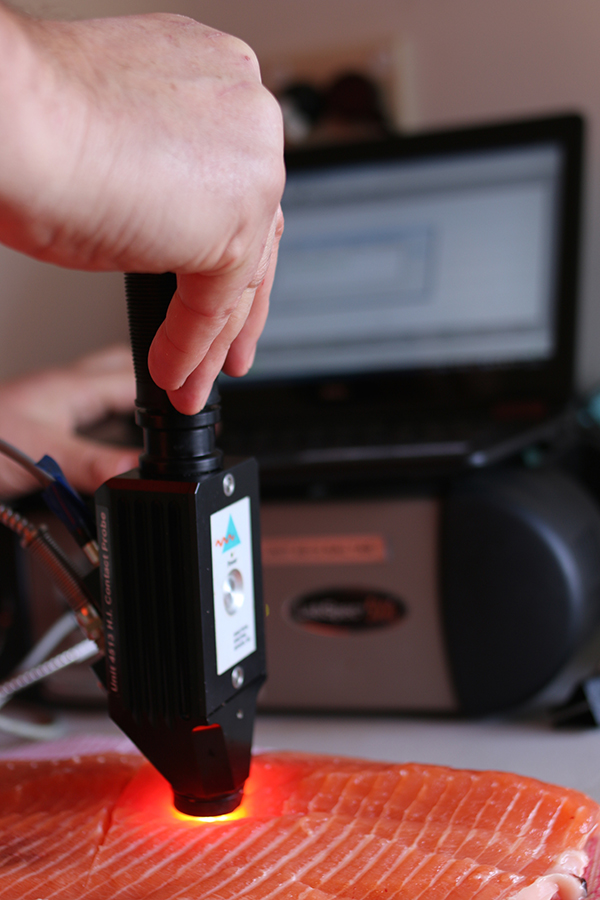
Dr. Nick Wade, a research scientist at the Commonwealth Scientific and Industrial Research Organisation in Brisbane, Australia, agrees that stressful environments play a role, and has been investigating the impacts of high-temperature stress on salmon and particularly on flesh pigmentation.
“Farm studies in Australia have demonstrated that extreme water temperatures during summer deplete fillet pigment and produce banding or even a complete loss of pigmentation,” he said. “This is assumed to be from increased oxidative stress, but ideally, the development of non-destructive stress markers in farmed species will help determine whether populations are actually stressed and measure the impact of potential dietary interventions.”
Wade has been investigating the use of natural carotenoids from algae that may have greater antioxidant capacity.
“Our recent research in salmon at high temperature has shown that algal carotenoids enhanced feed intake and reduced levels of antioxidant proteins in the liver, potentially meaning that natural astaxanthin is a more powerful antioxidant,” he said. “But this did not reduce the appearance of pigment banding in the muscle during high temperature.”
“There is a direct link between the amount of pigment in feed, amount of feed intake and product quality, but a bit of a disconnect between astaxanthin function in alleviating the impacts of oxidative stress and its deposition in the muscle,” Wade continued. “It’s also difficult to track carotenoid metabolism since it breaks down into non-pigmented metabolites, or to know whether other antioxidant mechanisms are being used to deal with the stress.”
Wade says breeding programs that actively use color as a selectable indicator can improve astaxanthin utilization from salmon feed.
“Near-infrared spectroscopy (NIRS) can be used as a rapid screening tool to predict the amount of fat and pigment in flesh. These become measurable phenotypes that can be used in a breeding program to maintain or improve pigmentation, as well as beneficial long-chain fatty acids,” he said.
Ytrestøyl, meanwhile, points to the importance of fillet pigmentation to consumers. Consumer acceptance appears to depend on strong, even pigmentation, she said, and more research may be required into whether consumers could become used to paler salmon. Studies on different market trends, how these are changing, and consumer expectations in different countries will all add value, she added.
“Salmon farming and other aquaculture sectors could keep track of consumer preferences and how they change over time,” she said. “For example, young people are more likely to prefer food that looks natural and perhaps with less color. It will be interesting to see new studies on these preferences, and surveys on different markets and consumer age groups.”
“We also hope that the information we obtain from the Knowledge Mapping Pigmentation project will help aquaculture better understand its impact on biological processes and pinpoint production-related effects on pigmentation,” she continued.
Darias says that further research on the regulatory factors of all types of chromatophores and the interactions among them is essential to understanding the mechanisms of skin pigmentation and identifying the causes of any skin anomalies. Also, key are new insights into the influence of stress in gut microbiome modulation and the role of the gut microbiome in the regulation of pigmentation.
“Research on the molecular mechanisms and cellular processes of pigmentation regulated by the gut microbiome and their links to other biological processes will undoubtedly shed light on the intricate and interlocked processes of physiological regulation in fish,” she concluded.
Follow the Advocate on Twitter @GSA_Advocate
Now that you've reached the end of the article ...
… please consider supporting GSA’s mission to advance responsible seafood practices through education, advocacy and third-party assurances. The Advocate aims to document the evolution of responsible seafood practices and share the expansive knowledge of our vast network of contributors.
By becoming a Global Seafood Alliance member, you’re ensuring that all of the pre-competitive work we do through member benefits, resources and events can continue. Individual membership costs just $50 a year.
Not a GSA member? Join us.
Author
-

Bonnie Waycott
Correspondent Bonnie Waycott became interested in marine life after learning to snorkel on the Sea of Japan coast near her mother’s hometown. She specializes in aquaculture and fisheries with a particular focus on Japan, and has a keen interest in Tohoku’s aquaculture recovery following the 2011 Great East Japan Earthquake and Tsunami.
Tagged With
Related Posts
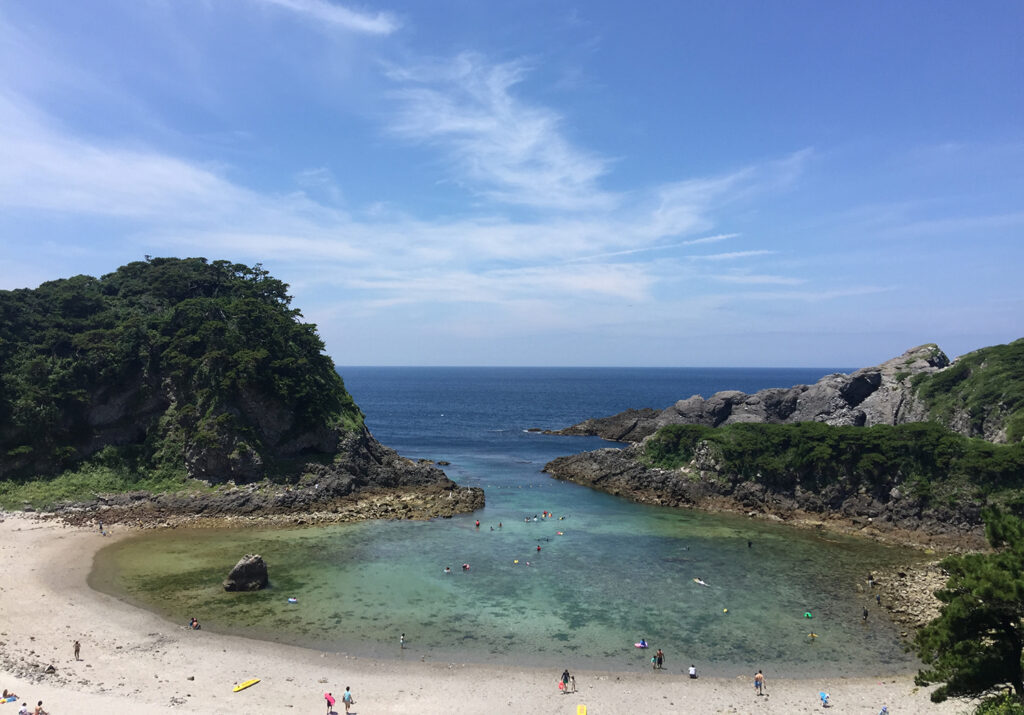
Responsibility
Is a Japanese volcano offering us a sneak preview of ocean acidification?
Shikinejima is a scenic getaway for tourists but the seas surrounding its volcano offer a glimpse of how the ocean could behave in the future.
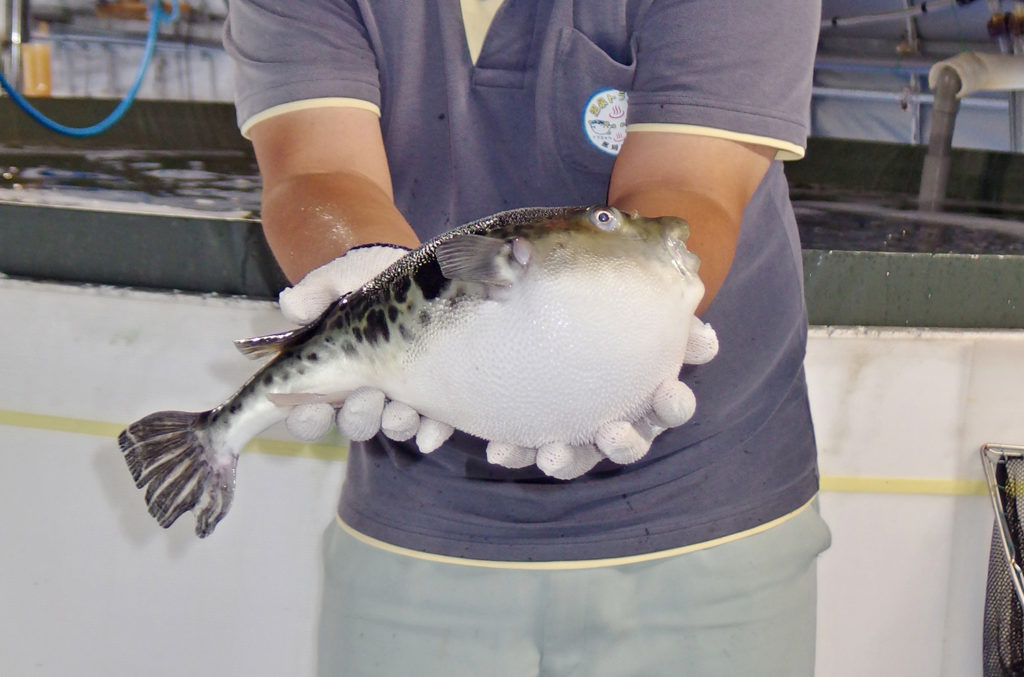
Intelligence
In Japan, tiger puffers find themselves in hot water
A technique to farm tiger puffers in hot spring water was invented to revitalize the town of Nasu-karasuyama and is now spreading to other areas of Japan.
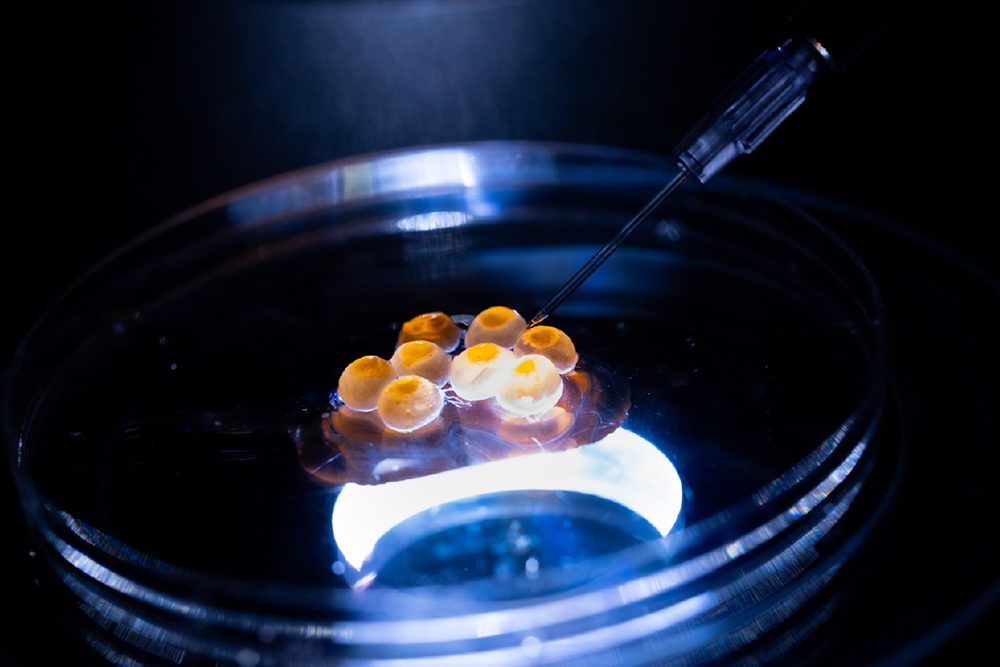
Innovation & Investment
With tools like CRISPR, can genome editing deliver more resilience for aquaculture?
Research in Japan shows genome editing can improve muscle growth in farmed fish, resulting in less feed and boosting disease resistance.

Responsibility
Sludge report: Finding value in Norway’s aquaculture waste
Bioretur converts aquaculture waste, or sludge, into fertilizer as demand for “circular economy” technologies grows.


